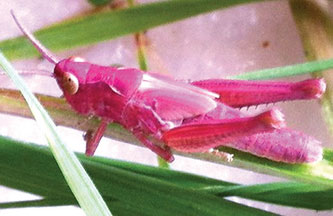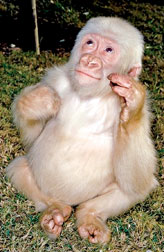|

Record? 2,551 foundation stones laid in eight hours
If the organisers of the Guinness World Records come to know about
this feat it would be inscribed in stone in the annual records book.
 |
|
Gopal Bhargava |
It happened in India’s Madhya Pradesh and performed by Social Justice
and Rural Development Minister Gopal Bhargava.He created a record by
laying foundation for 2,551 projects in eight hours.
You might wonder whether he visited all those places for this
unbelievable exercise.
The minister’s string of rituals took place in his stronghold Rehli,
where he hired a small stadium for his foundation-laying spree. In
total, 2,551 stones and plaques were collected and piled upon a podium.
He spent just five minutes each, anointing every stone with
vermillion and flowers amid a cloud of incense and chanting of mantras
by 12 hired priests.
The minister dedicated 2,551 projects worth 3.25 billion rupees for
the welfare of Madhya Pradesh.
Villagers from 90 gram panchayats thronged the venue to attend the
ceremony, which he termed as the samoohik shila poojan
karyakram(community foundation stone laying program). His effort was
hailed by his supporters as an innovative way to cut cost and save time.
The organisers called the name of each village and volunteers stacked
the plaques of every project on a platform.
The ritual was not over. The volunteers religiously transported the
stones and installed at their chosen sites.
He did a similar feat five years ago in Bhainswadi, a hamlet in his
constituency.
When his political rivals vandalised 1,100 foundation stones that had
the minister’s name inscribed, Bhargava rushed there and performed a
re-installation ceremony with the help of priests.
Wow! A pink grasshopper!
A pink Grasshopper? You must be kidding?
 |
|
The vivid pink insect was spotted by
an eight-year-old on a farm in Wiltshire |
No its true. If so you can’t call him a grasshopper.
Why?
Then the grass too should be pink in colour? Isn’t it?
The dialogue goes on but the fact remains that a pink coloured
grasshopper has been found on a farm in Wiltshire. UK.
This “very unusual” vivid pink insect was spotted by eight-year-old
Bailey Smith at Ratfyn Farm in Amesbury. The insect has been identified
as a young female meadow grasshopper by the Wiltshire and Swindon
Biological Records Centre (WSBRC).
Vicky James, from the WSRBC, said although it was not a rare species,
“only rarely are vivid pink female nymphs seen”.
Bailey Smith, who keeps his pony at Ratfyn managed to trap the
inch-long insect to show his mother, Vanessa.
“I thought he was pulling my leg,” she said.
“But he said ‘it's really pink’ and it was, it was cerise pink - so
we took a picture of it and sent it to the WSBRC.” According to the
WSBRC, common grasshoppers are usually green in colour, however, “brown
and purplish forms also occur”.
“But it is a very unusual to be this pink colour and only rarely are
vivid pink female nymphs seen,” said Ms James.
Snowflake - the only known albino gorilla in the world
Snowflake was the only albino western lowland gorilla known to man.
Snowflake the gorilla gained notoriety for being the only known
albino of his species. Now the late ape is making headlines again over
the recent post-mortem discovery that he was inbred.
 |
|
Snowflake was the conjunction of two
very rare events. |
Snowflake, a western lowland gorilla, was born in the wild in
Equatorial Guinea (map). In 1966 he was taken to the Barcelona Zoo in
Barcelona, Spain, where he lived until his death from skin cancer in
2003. Since then, scientists at Barcelona's Institut de Biologia
Evolutiva at the University of Pompeu Fabra have been studying
Snowflake's frozen blood and using it to sequence his genome. In a new
study, they announced a twofold discovery about Snowflake's genes that
may help scientists understand how he became the only known albino of
his species.
An animal that does not produce melanin, resulting in little or no
color in the skin, hair, and eyes, is considered an albino.
First, according to the study leader Tomas Marques-Bonet the
scientists pinpointed the exact genetic cause of Snowflake's albinism -
a gene known as SCL45A2, which had previously been reported in albino
mice, horses, and chickens.
Second, and possibly more important, the scientists found that
Snowflake was the result of inbreeding - an unusual practice for his
species - which was likely the reason for the gorilla's unique
coloration, according to the study. The albino mutation is recessive,
Marques-Bonet explained, meaning it becomes visible only if both parents
pass the mutation on to a child. One of Snowflake's ancestors was likely
the original carrier.Because his parents were related - an uncle and a
niece by the researchers’ guess - their DNA contained some of the same
genes, one of which happened to be the rare albinism mutation.
Both the mutant gene and the inbreeding are rare occurrences for
western lowland gorillas, and the combination that produced Snowflake
isn't likely to happen again any time soon.
“This explains why only one albino western lowland gorilla has ever
been found,” Marques-Bonet said. |

